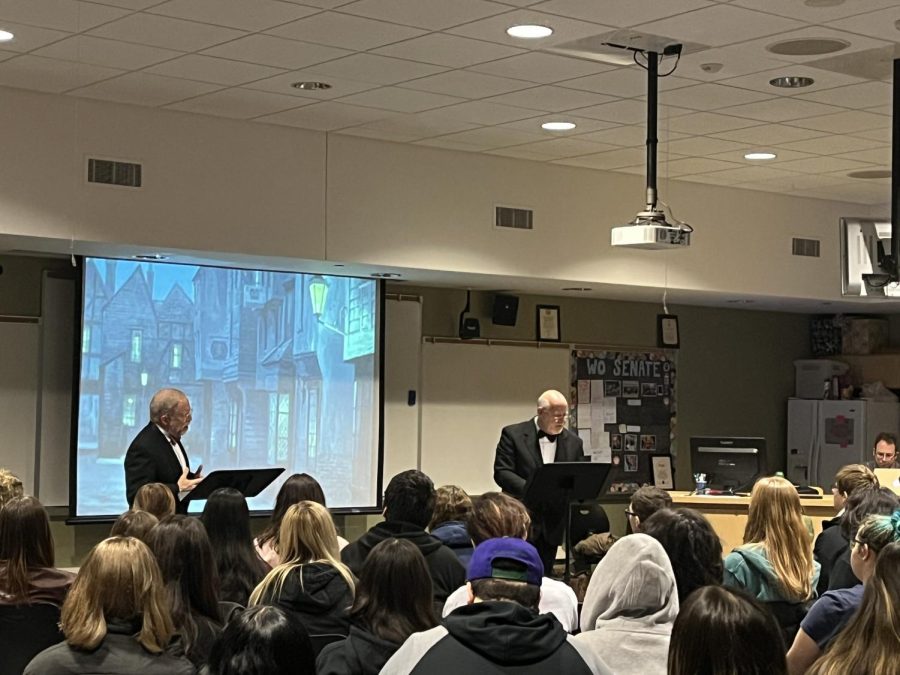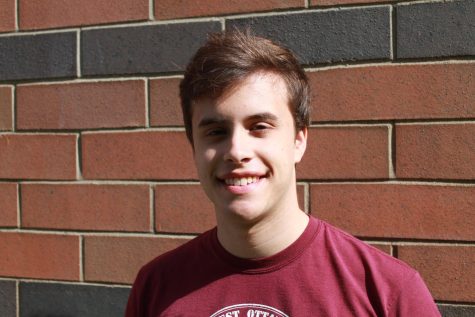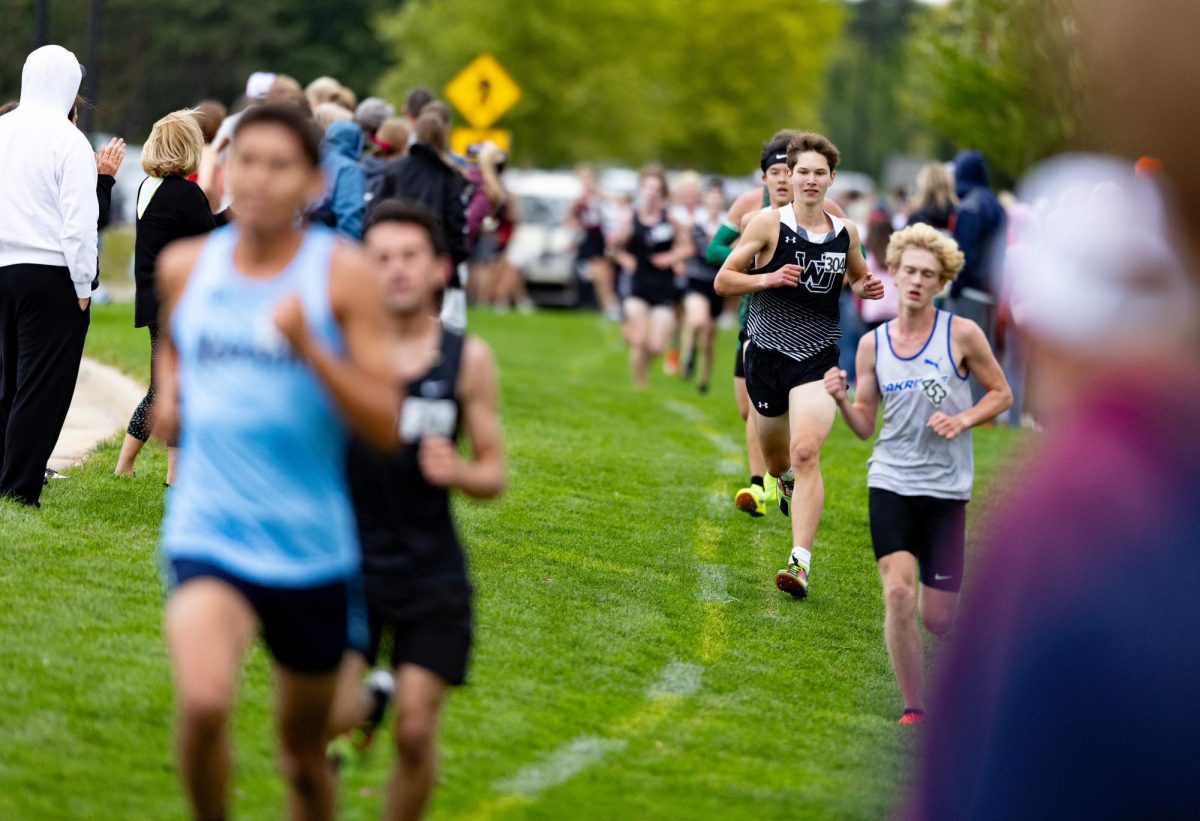What made this Christmas Story special
Pat Foley and Tom Good begin their rendition of A Christmas Carol by describing the streets of 1811 London.
January 19, 2023
On December 5, Sr. Kolin VanFossan approached his 2nd hour Advanced Expository Writing class, not expecting anything special.
What he found was his teacher, Chris Norton, blocking the doorway and pointing out of the building.
“Go to the North LGI,” he said, while ignoring the confused responses.
When his class arrived at the North LGI, they entered a room packed with other English students, as well as two finely dressed men with excited smiles across their faces. They expected some kind of presentation, but what they got was magical: The finest rendition of A Christmas Carol they will ever see.
Like all good stories, this one begins in the past; not a past with selfish bankers or Christmastime hatred, though, it’s a past with two men: Pat Foley and Tom Good.
Foley is no stranger to the halls of West Ottawa . In fact, he taught in WO’s theatre and English departments for 22 years. He shares a special connection with the school, and says still feels at home here.
The two are more than just lovers of literature or theatre, they’re incredibly seasoned storytellers. Good has been organizing outdoor storytelling events for the past 25 years. One of these events, “Riverside Raconteurs Storytelling Bonfires,” is a storytelling gathering that the pair have been putting on for years. The uniquely named show is a simple bonfire where anyone can come to tell and listen to stories, whether old fables or personal anecdotes. It’s a very informal event, and it embodies the two’s love of both great stories and personal expression.
In early 2019, Foley approached Good about working on a different type of show: A scripted two-person live reading of Charles Dickens’ A Christmas Carol. The two went to work, meeting week after week to iron out and rehearse a script for the show before finally performing it in Grand Rapids in December of that same year. They performed six shows, and the positive response encouraged them enough to perform it the next year. They would have continued performing the show in 2020, but the pandemic spoiled their plans.
They weren’t able to perform the show again until the present. As of December 5, they had only performed the show in front of a live audience once in the past two years, and that performance was in a Grand Rapids church just the night before. One might expect Good and Foley to come out nervous or anxious, but they were anything but.
They set the stage with a description of the novel’s time period, introducing the themes and questions they would explore as the show continued. They then entered the first scene, and Foley, a kind and pleasant man, contorted his face into a judgmental scowl that was the spitting image of Ebenezer Scrooge. He let out a hearty “Bah! Humbug!” at Good, who was embodying Scrooge’s wide-eyed nephew.
Foley’s transformation was jarring, but it certainly would not be his last as the pair took turns occupying the roles of new characters as they entered the story. They had no costume changes or makeup, but the two transformed their voices and faces so well that it really felt like they were becoming new people in every transition.
Not only were the performances entertaining, including all of Scrooge’s encounters with the famous ghosts of Christmas past, present, and future, the historical context they added contributed another layer to the audience’s enjoyment.
Between each ghostly encounter, the performers took a pause to teach the audience about the time period of the story. A Christmas Carol harshly critiques Victorian England’s classist system, which favored the rich and prevented the poor from advancing in society. These themes, still relevant to modern times, might have been lost on the students if not for these engaging interludes.
Sr. Kolin VanFossan said, “The performers did a fantastic job of telling the classic story while also pausing to provide insight on the life of Charles Dickens and the creation of the text. My perspective of A Christmas Carol was definitely changed as I now better understand the message/motives behind the story.”
The story took a dark turn in its final act. The ghosts’ last stop is the grave of Ebenezer Scrooge, and when they heard Scrooge’s final desperate, pathetic pleas for his life, there wasn’t a soul in the LGI room who could look away.
Scrooge managed to change his ways, and closed the show with one final “God bless us, every one!” The lengthy applause was clear evidence that Good and Foley had succeeded in bringing WO students into the strange world of Scrooge, ghostly encounters, and Victorian England.
As the students shuffled out of the North LGI, each of them imbued with a newfound air of Christmas spirit, Good and Foley got to thinking about their future. They love performing, and if they could convince high schoolers to love a 200 year-old book, what couldn’t they do?
That’s why the pair plans to bring the show to as many people as they can in years to come, expanding with more shows in the greater West Michigan area. After all, if there’s anything that A Christmas Carol teaches its audience, it’s that Christmas goodwill cannot be contained.





